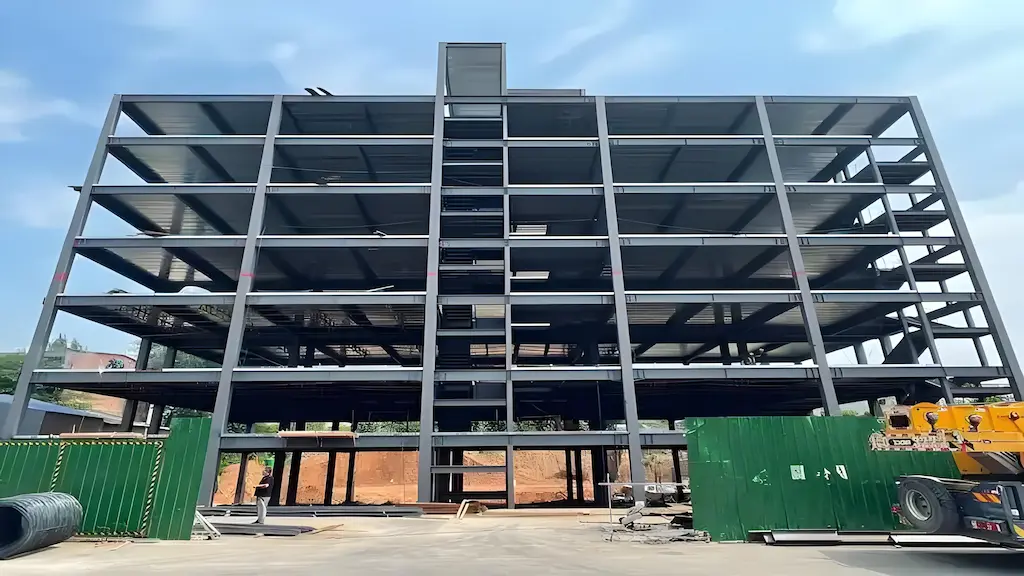Hybrid Steel-Concrete Structures

Introduction to Hybrid Steel-Concrete Structures
Hybrid steel-concrete structures combine the best properties of steel and concrete to create building systems that offer enhanced strength, flexibility, and durability. This composite approach leverages steel’s high tensile strength and ductility alongside concrete’s excellent compressive strength and fire resistance. The synergy between these materials allows architects and engineers to design structures that meet complex modern demands, such as high-rise buildings, long-span bridges, and seismic-resistant frameworks.
The use of hybrid structures addresses challenges inherent in using steel or concrete alone. Steel components provide lightweight frameworks and rapid construction, while concrete adds mass, stiffness, and vibration damping. Together, they improve load-bearing capacity and structural resilience. This composite action is typically achieved through innovative connection techniques and reinforcement strategies that ensure efficient load transfer between steel and concrete elements.
Benefits of Combining Steel and Concrete
The integration of steel and concrete in hybrid structures offers numerous benefits over traditional single-material construction. One major advantage is the improved structural performance; steel’s tensile strength complements concrete’s compressive capacity, creating a more balanced system that can carry heavier loads and resist dynamic forces like wind and earthquakes more effectively.
Hybrid structures also allow for greater architectural freedom. Designers can create longer spans and slimmer profiles without sacrificing stability, enabling more open interiors and aesthetically appealing designs. Additionally, the fire resistance of concrete enhances the safety of steel frameworks, often reducing the need for costly fireproofing coatings.
From a construction perspective, hybrid systems can reduce overall material usage and construction time. Prefabricated steel components combined with cast-in-place or precast concrete elements streamline the building process and reduce labor costs. Sustainability benefits include efficient use of recyclable steel and the potential for incorporating eco-friendly concrete mixes, contributing to green building certifications.
Common Applications of Hybrid Steel-Concrete Structures
Hybrid steel-concrete construction is widely applied across various sectors, particularly in commercial, residential, and infrastructure projects. High-rise buildings often utilize steel-concrete composite floors and beams to achieve the necessary strength-to-weight ratio while maintaining architectural flexibility. Bridges benefit from hybrid decks and girders, where concrete slabs provide compressive strength and steel beams supply tensile support, resulting in durable and resilient structures.
Seismic-prone regions extensively use hybrid systems due to their superior ductility and energy absorption capabilities, helping buildings withstand earthquake forces without catastrophic failure. Parking garages, stadiums, and industrial facilities also adopt hybrid construction for its cost-effectiveness and structural reliability.
Innovations such as modular construction and advanced connection technologies continue to expand the potential uses of hybrid steel-concrete systems, making them a cornerstone of modern structural engineering.
Challenges and Future Trends in Hybrid Steel-Concrete Structures
Despite their advantages, hybrid steel-concrete structures face challenges in design complexity, material compatibility, and construction logistics. Ensuring effective composite action requires precise detailing and quality control, particularly at the steel-concrete interfaces. Differences in thermal expansion, shrinkage, and corrosion potential must be carefully managed to prevent structural issues.
The construction process can be complicated by sequencing requirements, such as curing times for concrete before steel elements are fully loaded. Skilled labor and advanced equipment are necessary to achieve the desired integration and performance standards.
Looking to the future, research focuses on improving connection systems, developing high-performance concrete mixes, and integrating smart sensors for real-time structural health monitoring. Sustainability drives efforts to optimize material use and incorporate recycled content, aligning hybrid construction with green building goals.
As urban environments evolve and architectural demands grow, hybrid steel-concrete structures will remain vital for delivering safe, efficient, and innovative building solutions worldwide.





